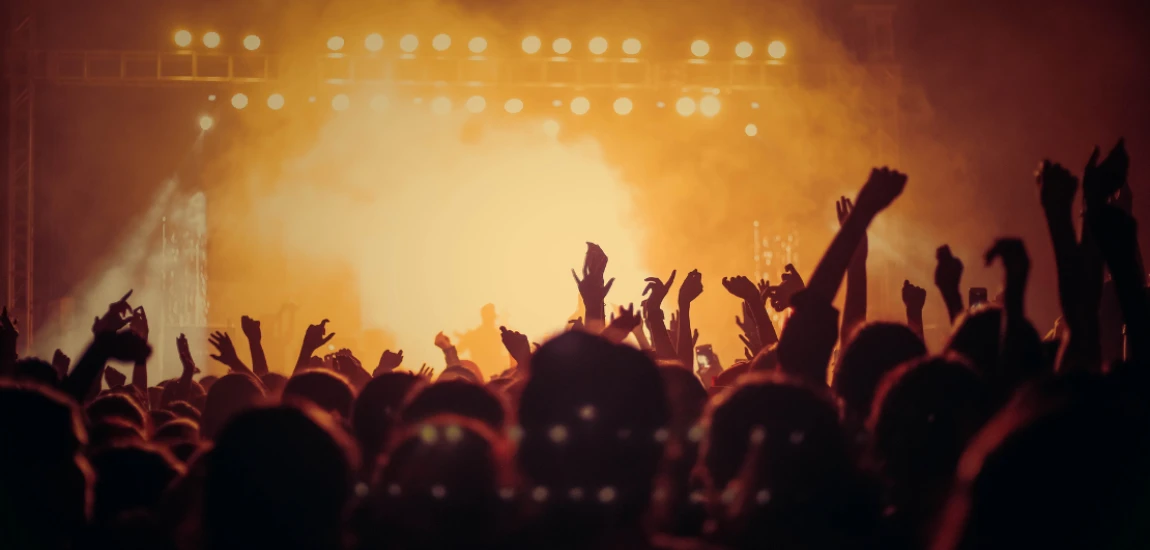Live Is Back: Why Events, Concerts & Theater Matter More Than Ever

After years of digital dominance, one thing has become clear—live entertainment is making a powerful comeback. From sold-out stadium concerts to local theater revivals, audiences are flocking to experiences that cannot be replicated on screens. The hunger for connection, authenticity, and collective joy has reminded us why events, concerts, and theater matter more than ever. In this blog, we’ll explore the cultural significance of live performance, its role in post-digital society, and why the future of entertainment may be more physical than virtual.
The Emotional Power of Live Entertainment

Shared human connection
Watching a concert or play live goes beyond hearing the music or seeing the performance. It’s about experiencing the same moment with thousands of strangers who are moved in the same way. This emotional synchronicity creates a lasting memory that no digital stream can match.
The energy of the crowd
A recorded performance captures sound and visuals, but it misses the heartbeat of the audience. The roar of a crowd, the spontaneous applause, or the silence before a big reveal adds electricity that amplifies the performance.
Immersion through presence
When people attend live events, they step away from distractions. Unlike scrolling through a phone while streaming, live performances demand presence. This immersion intensifies the emotions tied to the experience.
Why Live Music Still Thrives in the Streaming Era

Beyond playlists and algorithms
Streaming platforms offer convenience but often strip music of context. Live concerts restore that context by reconnecting artists with fans in a visceral way. Every note feels more alive when experienced in the moment.
Artists’ relationship with fans
For musicians, concerts are not just performances—they’re rituals of gratitude and exchange. Fans often describe concerts as moments of closeness with their idols, creating loyalty that extends beyond recorded tracks.
The rise of festival culture
Music festivals have exploded in popularity, combining multiple genres, food, fashion, and art into holistic experiences. These gatherings transform concerts into lifestyle events where attendees feel part of something bigger than themselves.
Theater’s Role in a Digital-First World

Storytelling beyond screens
Theater continues to prove its relevance by offering immediacy and intimacy. Unlike movies, where scenes can be edited and perfected, theater thrives on vulnerability and live energy. Each performance is unique and ephemeral.
New adaptations and experiments
Theater has evolved by embracing modern themes, interactive elements, and immersive formats. Productions like site-specific plays or audience-driven storylines show that theater is adapting to keep audiences engaged.
The healing power of live drama
Post-pandemic, theater has been embraced not just as entertainment but also as therapy. Stories performed live encourage empathy, reflection, and community healing in ways a screen cannot replicate.
The Economic and Social Impact of Live Events

Driving local economies
From small town theaters to massive stadium tours, live events generate millions in tourism, hospitality, and jobs. Cities hosting major performances often see boosts in restaurants, hotels, and transportation.
Social bonding and community
Live events create gathering spaces where communities thrive. Whether it’s a Broadway show or a local band, these events unite people across backgrounds, creating shared cultural touchpoints.
Supporting creative industries
Behind every concert or theater show is a network of professionals—technicians, designers, producers, and vendors. Live entertainment sustains entire industries that benefit from continued audience demand.
Digital Fatigue and the Desire for Real Experiences

The limits of virtual entertainment
During the pandemic, virtual concerts and streaming theater kept art alive, but they lacked the intensity of being there. Many audiences now feel oversaturated by screens and crave genuine physical experiences.
Escaping algorithm-driven content
Streaming platforms decide what we see next, often pushing formulaic content. Live events disrupt that cycle, allowing individuals to choose experiences that feel authentic and unpredictable.
Reclaiming attention and presence
In a world of constant notifications, live entertainment creates rare spaces where people unplug, focus, and engage deeply. This ability to capture undivided attention is part of its enduring appeal.
Technology Enhancing Live Performances

Immersive stage design
Advancements in lighting, sound, and visual effects have elevated live shows. From holograms to projection mapping, technology is enhancing—not replacing—the live experience.
Hybrid experiences
Some events now offer both in-person and streamed access. This hybrid model increases accessibility without diminishing the magic of being present. It also creates inclusivity for fans unable to travel.
Social media amplification
Ironically, technology also amplifies live culture. Fans post clips, share hashtags, and generate buzz that keeps live performances trending long after the curtains close.
The Future of Live Entertainment

Post-pandemic resurgence
The return of concerts and theater after global lockdowns has been met with record demand. People are willing to spend more for the irreplaceable joy of being part of a crowd again.
Sustainability and accessibility
Future live events will balance environmental responsibility with inclusivity. From eco-friendly festivals to affordable ticketing models, the industry is exploring ways to remain ethical and open.
Live as cultural necessity
Ultimately, live events are not just entertainment—they’re cultural anchors. They remind us of the importance of storytelling, music, and human gathering. In an increasingly digital world, their necessity only grows stronger.



